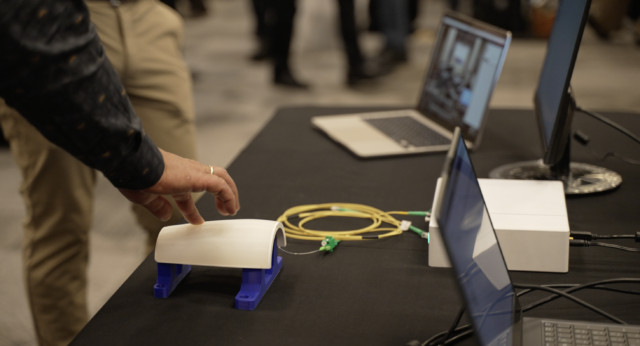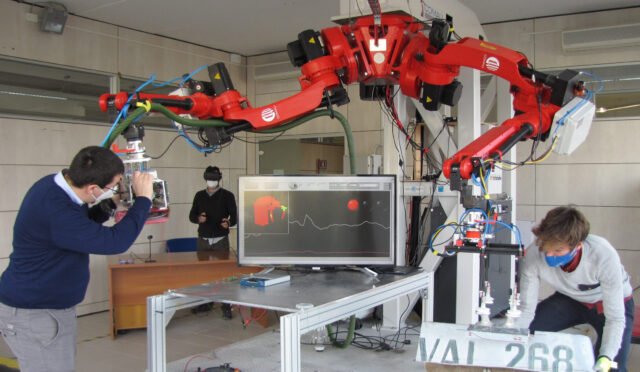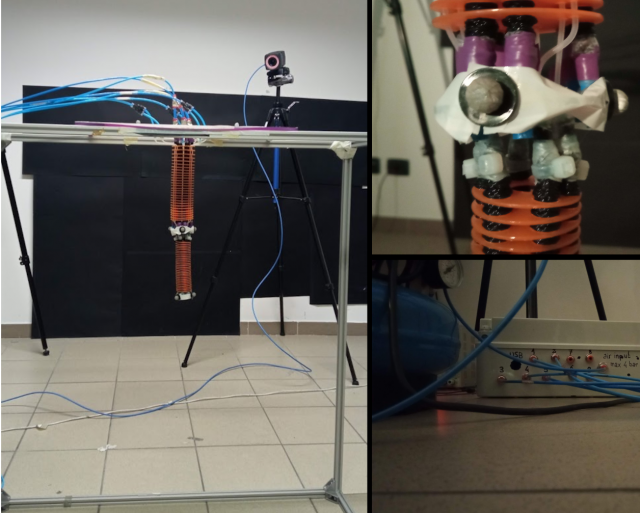HomeRobotic Database - Single Infrastructure | TERRINet

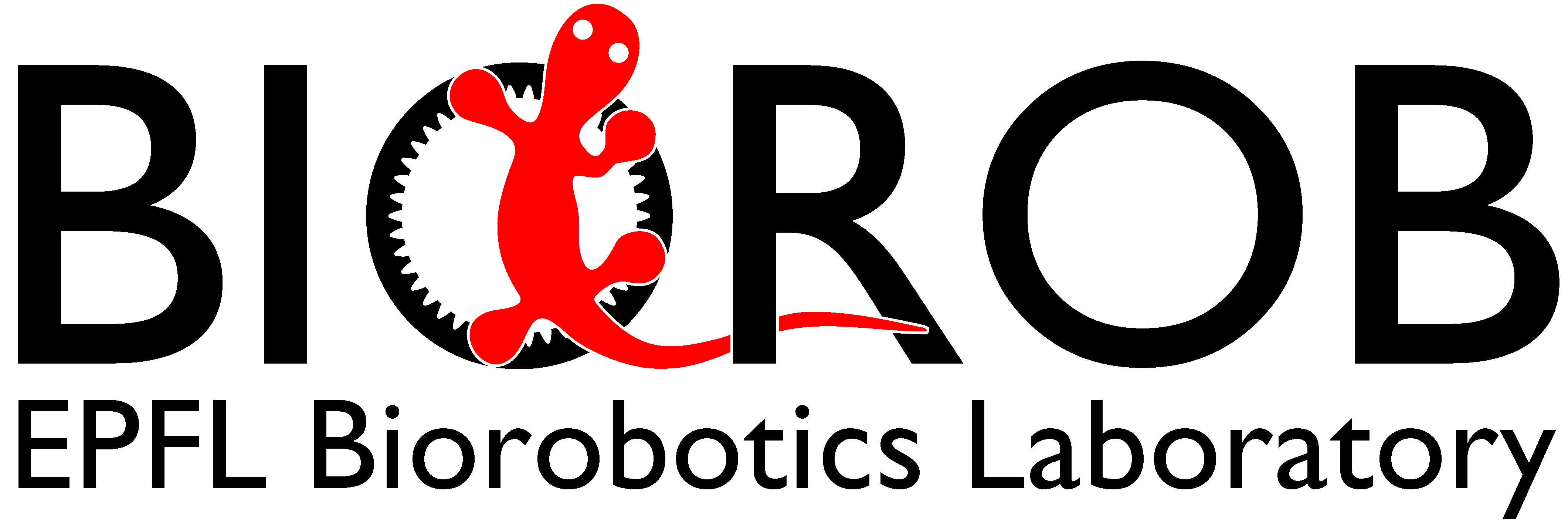
Address: Route Cantonale,
1015 Lausanne, Switzerland
Website
https://biorob.epfl.ch/
Scientific Responsible
Auke Ijspeert
About
The Biorobotics Laboratory (BioRob in short) is part of the Institute of Bioengineering in the School of Engineering at the EPFL. We work on the computational aspects of locomotion control, sensorimotor coordination, and learning in animals and in robots. We are interested in using robots and numerical simulation to study the neural mechanisms underlying movement control and learning in animals, and in return to take inspiration from animals to design new control methods for robotics as well as novel robots capable of agile locomotion in complex environments.
Our research interests are therefore at the intersection between robotics, computational neuroscience, nonlinear dynamical systems, and machine learning. We carry out research projects in the following areas: neuromechanical simulations of locomotion and movement control, systems of coupled nonlinear oscillators for locomotion control, adaptive dynamical systems, design and control of amphibious, legged, and reconfigurable robots, control of humanoid robots and of exoskeletons.
Presentation of platforms
Available platforms

Swimming Pool and Flow tank
The facility is a medium size pool for testing performance of small swimming robots. The room is equipped with a tracking system based on the cameras mounted above the swimming pool. Tracking system provides position information of all bright points in the swimming pool area. Swimming tests against water flow can also be done by mounting removable components of the flow tank system, shown in the left photo.
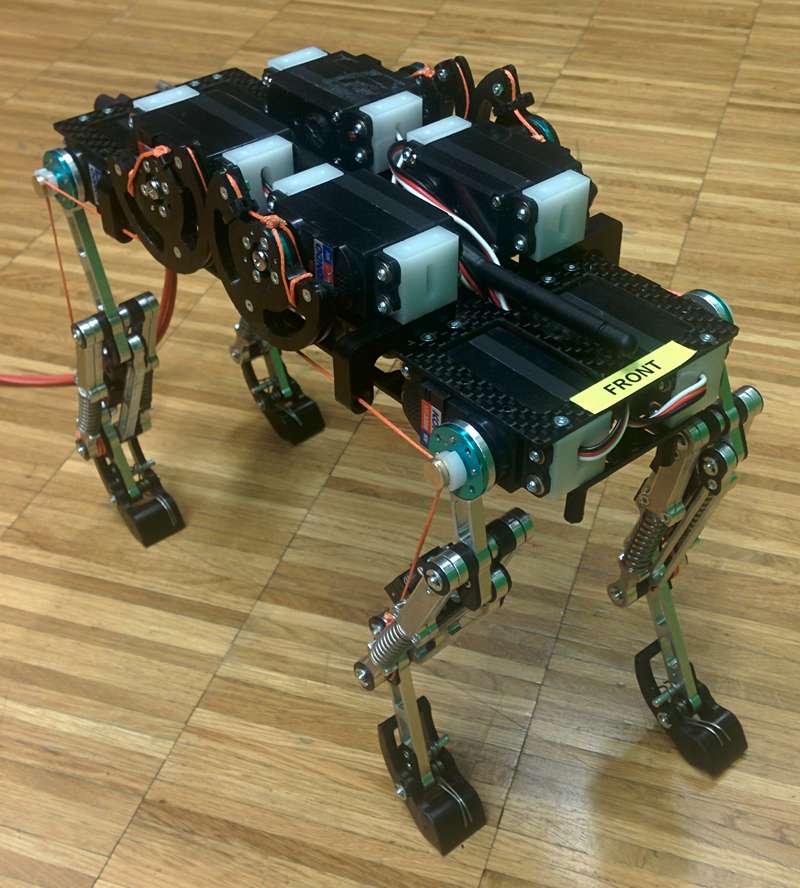
Cheetah-Cub-AL
Cheetah-Cub (https://biorob.epfl.ch/cheetah) was not fundamentally altered from its early development days. Some major changes are introduced with Cheetah-Cub-AL. The leg was redesigned and features now a (to the saggital plane of the leg) symmetric diagonal spring, canceling unwanted bending behavior present in previous Cheetah-Cub-versions. Additionally, making use of classical CNC manufacturing techniques with aluminum in combination with ball-bearings in every joint, friction was reduced, alignment of the axis and repeatability of experiments were improved. The changes to the trunk are little but feature now an easy access to the control board for development purposes. Another major change is the switch to a new operating system, Jokto, that improves stability and ease of use. Tuleu implemented inverse-kinematics of the legs for control purposes. This allowed to tune gaits much faster andmore intuitively. The robot was featured recently in Prof. Ijspeert’s talk in TED Global Geneva.
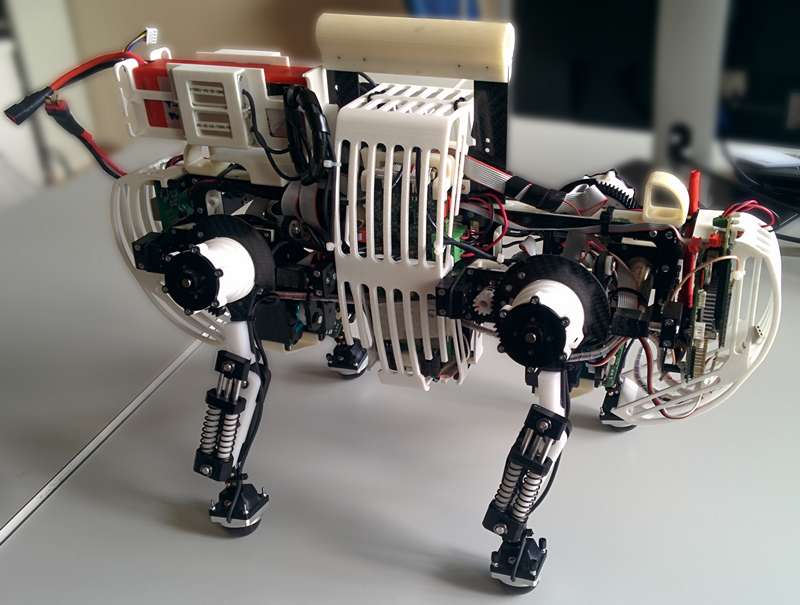
Oncilla
Oncilla is a compliant, quadruped robot developed during the FP7 European project AMARSi (Adaptive Modular Architectures for Rich Motor Skills, project start March 2010, project duration 48 months, 4 Oncilla copies build and distributed, 2 remain at BIOROB). The goal of the AMARSi project was to improve richness of robotic motor skills. Oncilla is a highly sensorized robot with panthographic legs (ASLP legs) as well as an abduction/adduction (AA) mechanism. The sensorization features encoders on each joint and motor, IMU as well as new ground contact sensors in the feet (3d force-sensors). The research done with the BIOROB team focuses around closed loop rough terrain locomotion and richer motor behaviors through a combination of CPG’s and reflexes.
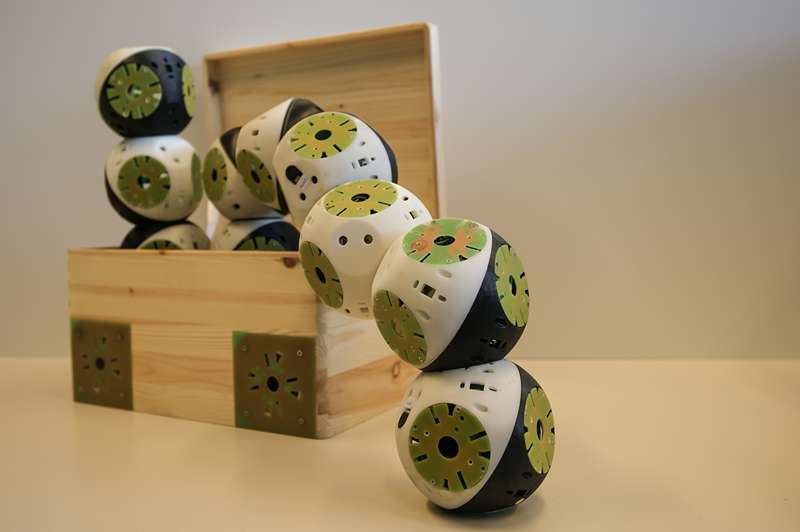
Roombots
Modular robotics for adaptive and self-organizing furniture that moves, self-assembles, and self-reconfigures. Our dream is to provide multi-functional modules that are merged with the furniture and that lay users and engineers can combine for multiple applications.
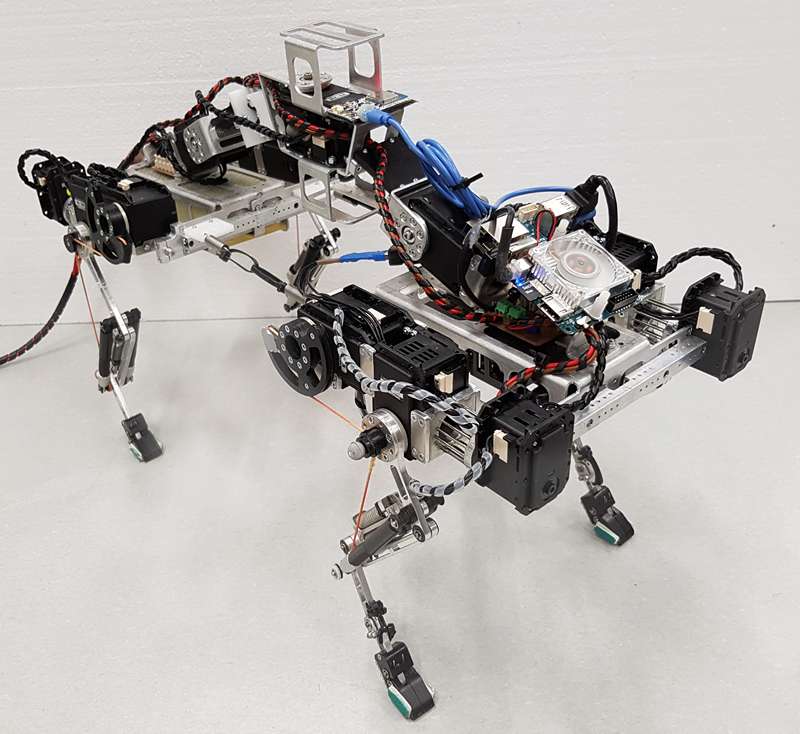
Serval
Serval, the last in a line of robot iterations, is meant to serve as a quadruped for agile movement. We use the previously researched mechanisms, control structures and gained knowledge in the electronics development to build a combined and hopefully higher performing robot. Serval consists of and active 3-DOF spine (combining advantages from Lynx and Cheetah-Cub-S), leg units with adduction/abduction mechanism and a scaled ASLP-version of Cheetah-Cub-AL. All motors (Dynamixel MX64R and MX28R) are combined with in-series elastics to protect the rather sensitive gear-boxes from harm in different load scenarios. The robot is equipped only with a minimal sensor set, consisting of a low-cost, medium-grade IMU. Collaborations, started close to the end of this thesis will provide contact and GRF sensing with capacitive sensors as well as a sensitive skin for physical guidance. Control is realized through inverse kinematics for the legs, (for now) offsets in the spine and an underlying CPG-network for pattern generation. Reflexes, like in Oncilla, were not yet implemented, but are ongoing and future work.
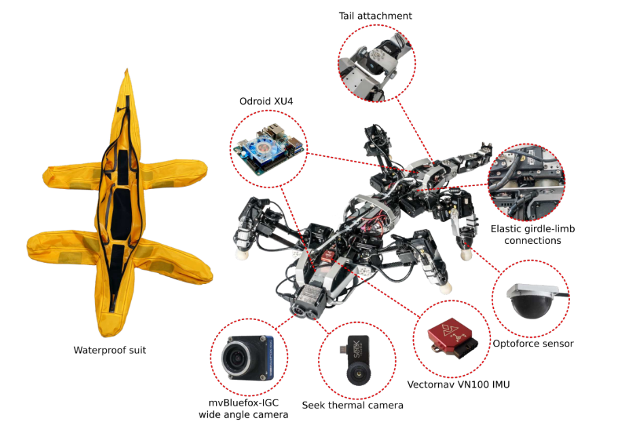
Krock-2 Amphibious Quadruped
Krock 2 is a sprawling-gait quadrupedal robot developed under the NCCR Robotics grant, aimed at investigating locomotion through cluttered and wet terrain in search and rescue scenarios. The robot is capable of terrestrial locomotion as well as aquatic gaits along the surface of water when equipped with its tailored dry suit. The robot was developed by Kamilo Melo and Tomislav Horvat and is currently maintained by Matt Estrada <matthew.estrada@epfl.ch>


